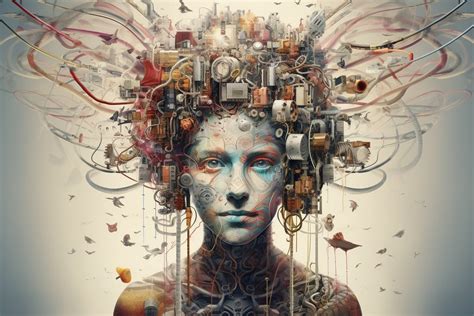The intersection of AI and art has sparked a contentious discussion within the creative community, with concerns ranging from the reproduction of artistic styles to the commoditization of creativity. The comments reflect a spectrum of viewpoints, highlighting the tension between the potential for AI to enhance artistic exploration and the perceived threat to originality. As artists grapple with the implications of AI in their craft, one aspect stands out — while AI can mimic styles and produce visually appealing outputs, it falls short in capturing the underlying meaning and thought process inherent in human-created art.
The notion that AI could replace or devalue the work of artists is met with resistance, as evidenced by comments emphasizing the irreplaceable essence of human creativity. Despite AI’s ability to generate content efficiently, the emotional and intellectual depth found in human artistry remains unmatched. Artists witness firsthand the limitations of AI, noting that while it may replicate superficial styles, it lacks the intuitive decision-making and interpretive abilities that define true creative expression.
While concerns about copyright infringement and the mass production of AI-generated art loom large, there are glimpses of optimism regarding the innovative potential of AI tools. Artists find that AI models can serve as valuable aids in exploring concepts and compositions, offering new avenues for creative experimentation. The evolving relationship between artists and AI presents a unique opportunity for artistic growth, challenging creators to adapt to a changing landscape and leverage technology as a tool for inspiration.
The expanding use of generative AI in art creation raises questions about the nature of style, originality, and artistic innovation. The debate over copyright protection and the ethical implications of AI training on existing art highlight the complexities of balancing technological advancements with creative integrity. Artists navigate this terrain, leveraging AI’s capabilities to augment their creative processes while safeguarding the unique aspects of their artistic vision.
As artists and enthusiasts continue to explore the possibilities and limitations of AI in art, the underlying quest for authenticity and human expression remains paramount. AI serves as a catalyst for experimentation and collaboration, offering new perspectives and approaches to artistic endeavors. While the debate rages on, one thing is clear — the fusion of human creativity and AI technology is reshaping the artistic landscape in ways that challenge, inspire, and redefine traditional notions of artistry.
In the ever-evolving realm of art and technology, the role of AI as a creative partner rather than a replacement for human ingenuity emerges as a prevailing theme. Artists harness the power of AI tools to expand their creative horizons, experiment with new styles, and delve into uncharted artistic territories. The synergy between human artistry and machine learning presents a dynamic fusion of tradition and innovation, where the boundaries of artistic expression are continuously redefined.
Ultimately, the impact of AI on art underscores an important paradigm shift in the creative domain. While concerns about imitation, copyright, and authenticity persist, the marriage of human creativity with AI innovation opens doors to endless possibilities. As artists navigate the challenges and opportunities presented by AI, the essence of artistry — shaped by individual perspective, emotion, and intention — remains at the core of every creation, ensuring that the human touch in art endures amidst technological advancements.


Leave a Reply